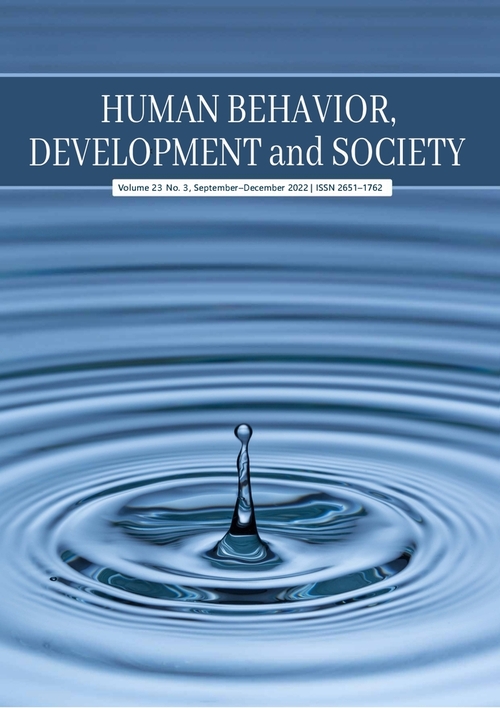Inner Strength and Coping Strategies of Women Victims of Domestic Violence in Cebu City, Philippines
Main Article Content
Abstract
This study focused on the inner strength and coping strategies of women who were victims of domestic violence. A case study method that utilized purposive sampling, interviews, observation, and focus groups was employed to explore the experiences of three women survivors of domestic violence. The findings revealed that they adopted creative strategies to survive by utilizing their inner strength, leading to successful adaptation to difficult situations, and finding meaning amid abusive relationships through their cherished hopes and dreams of “pag sinabtanay” (peace), “panag-hiusa” (reconciliation) and “matarong ang kinabuhi sa mga anak” (to better the lives of their children). Furthermore, their stories revealed the reasons why they chose to stay in the abusive relationships, namely, (a) the need to protect their children, (b) economic need (lack of shelter and financial support), and (c) strong emotional attachment with their abusive partner who was intermittently kind, and promised that the abuse would never happen again. The women victims’ inner strength stemmed from the need to ensure their children’s security and their faith in God.
Article Details

This work is licensed under a Creative Commons Attribution-NonCommercial-NoDerivatives 4.0 International License.
Copyright: Asia-Pacific International University reserve exclusive rights to publish, reproduce and distribute the manuscript and all contents therein.
References
Asian Development Bank. (2017, December 18). Ending violence against women in Asia and the Pacific. Asian Development Bank. https://www.adb.org/news/features/ending-violence-against-women-asia-and-pacific
Barnett, O.W., Lee, C.Y., & Thelen, R.E. (1997). Gender differences in attributions of self-defense and control in interpartner aggression. Violence against Women, 3(5), 462–481.
Bell, K. M., & Naugle, A. E. (2005, May 1). Understanding stay/leave decisions in violent relationships: A behavior analytic approach. Behavior and Social Issues, 14, 21–46. https://link.springer.com/article/10.5210/bsi.v14i1.119
Boden, J. (2013). The ending of treatment: The ending of hope? Human Fertility, 16(1), 22–25. https://doi.org/10.3109/14647273.2013.777802
Brown, C., Trangsrud, H. B., & Linnemeyer, R. M. (2009). Battered women’s process of leaving: A 2-year follow-up. Journal of Career Assessment, 17(4), 439–456.
Davis, R.E. (2002). “The strongest women”: Exploration of the inner resources of abused women. Qualitative Health Research, 12(9), 1248–1263. https://doi.org/10.1177/1049732302238248.
Dunn, J. L. (2005). “Victims” and “survivors”: Emerging vocabularies of motive for “battered women who stay. Sociological Inquiry, 75(1), 1–30. https://doi.org/10.1111/j.1475-682X.2005.00110.x
Ferrari, J. R., Stevens, E. B., Legler, R., & Jason, L. A. (2012). Hope, self-esteem, and self-regulation: Positive characteristics among men and women in Recovery. Journal of Community Psychology, 40(3), 292–300. https://doi.org/10.1002/jcop.20509
Gelles, R. J., & Harrop, J. W. (1989). Violence, battering, and psychological distress among women. Journal of Interpersonal Violence, 4(4), 400–420. https://www.ojp.gov/ncjrs/virtual-library/abstracts/violence-battering-and-psychological-distress-among-women
Hamby, S. (2014). Battered women’s protective strategies: Stronger than you think. Oxford University Press.
Herman, J. L. (2015). Trauma and recovery: The aftermath of violence--from domestic abuse to political terror. Hachette UK.
Kwan, S. S. (2010). Interrogating “hope” – pastoral theology of hope and positive psychology. International Journal of Practical Theology, 14(1), 47–67. https://doi.org/10.1515/ijpt.2010.5
Landenburger, K. (1993). Exploration of women’s identity: Clinical approaches with abused women. Clinical Issues in Perinatal and Women’s Health Nursing, 4(3), 378–384.
Lazarus, R. (1993). Coping theory and research: Past, present, and future. Psychosomatic Medicine, 55(3), 234–247. https://pubmed.ncbi.nlm.nih.gov/8346332/
Lu, L., &Chen, C. (1996). Correlates of coping behaviors: Internal and external resources. Counseling Psychology Quarterly, 9(3), 297–308.
McShane, C. (1979). Community services for battered women. Social Work, 24(1), 34–39.
Mills, L. (1996). Empowering battered women transnationally: The case for postmodern interventions. Social Work, 41(3), 261–268.
Munhall, P. (1994). Re-visioning phenomenology: Nursing and health science research. National League of Nursing Press.
National Coalition against Domestic Violence (NCADV). (2022). Signs of abuse. https://ncadv.org/signs-of-abuse
Organisation for Economic Co-operation and Development. (2022). What is SIGI?. https://www.genderindex.org/
Pagelow, M. (1981). Woman-battering: Victims and their experiences. Van Nostrand Reinhold Company.
Panopio, I., & Rolda, R. (2007). Society and culture. Katha Publishing Co. Inc.
Post-White, J., Ceronsky, C., Kreitzer, M., Nickelson, K., Drew,D., Mackey, Koopmeiners, L., & Gutknecht, S. (1996). Hope, spirituality, sense of coherence, and quality of life in patients with cancer. Oncology Nursing Forum, 23(10), 1571–1579.
Roberts, A. (1996). Helping battered women: New perspective and remedies. Oxford University Press.
Steiner, L. M. (2009). Crazy love. St. Martin’s Press.
de Souza Santos, D., Bittencourt, E. A., de Moraes Malinverni, A. C., Kisberi, J. B., de França Vilaça, S., & Iwamura, E. S. (2022). Domestic violence against women during the COVID-19 pandemic: A scoping review. Forensic Science International: Reports, 5, 100276. https://doi.org/10.1016/j.fsir.2022.100276
Sullivan, C. (2012, October). Domestic violence shelter services: A review of the empirical evidence. Harrisburg, PA: National Resource Center on Domestic Violence. https://www.dvevidenceproject.org/wp-content/themes/DVEProject/files/research/DVShelterResearchSummary10-2012.pdf
Swan S., & Snow, D. (2006). The development of a theory of women’s use of violence in intimate relationships. Violence against women, 12(112), 1026–1045. http://vaw.sagepub.com
United Nations. (2019). What is domestic abuse? United Nations. https://www.un.org/en/coronavirus/what-is-domestic-abuse
Viglund, K., Olofsson, B., Lundman, B., Norberg, A., & Lövheim, H. (2021). Relationships among inner strength, health and function, well-being, and negative life events in old people: A longitudinal study. European Journal of Ageing, 19(3), 545–554. https://doi.org/10.1007/s10433-021-00642-6
Villares, O. (2018). Utilization of Gender and Development (GAD) Budget: Model for Gender Responsive Budgeting Framework [Unpublished dissertation]. Doctor of public Administration, Cebu Normal University.
World Health Organization. (2013, June 20). Violence against women: A 'global health problem of epidemic proportions'. World Health Organization. https://www.who.int/news/item/20-06-2013-violence-against-women-a-global-health-problem-of-epidemic-proportions-
Yin, R. K. (2002). Case study research: Design and methods. SAGE Publications.

